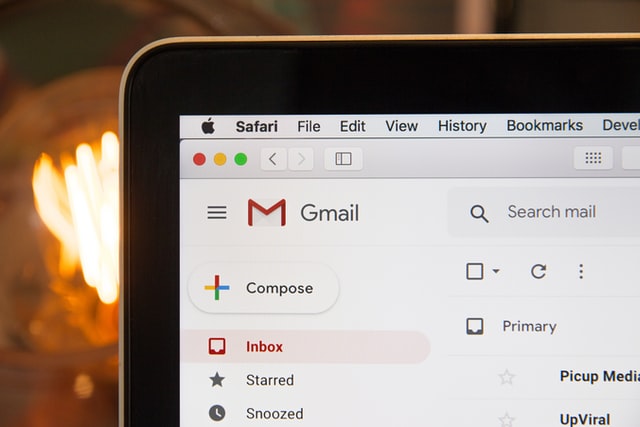
Email marketing plays a heavy role in many content marketing strategies, and it’s no secret that email is very profitable compared to other online initiates, including social media marketing.
There’s a lot out there about email marketing—plenty of generic tips, tricks, and best practices. Instead of focusing on the norm, I want to take you out of your email marketing comfort area and challenge you to try some of these unconventional email marketing tactics.
Tactic #1 – Welcome Them To Take Action
Your first contact with customers is especially important. They just demonstrated an interest in your product or service by signing up, so don’t waste the opportunity with a typical welcome email that does little more than briefly explain what to expect from your messages each week.
Instead, take a different approach, and use that first contact to entice customers to take action.
For ecommerce stores, provide a list of your month’s new products. Share the top picks from your merchandisers. Share items that are on sale.
For B2Bs, offer a free download such as a guide or whitepaper. Ask your new subscribers to respond with an answer to a question that you ask.
Share your most popular blog posts. Get people to click through to your website. Share a useful piece of information and ask your subscribers if they found it helpful.
Get your subscribers to take action. If you don’t, their action will be to delete the email and go to another brand’s website.
Action Steps:
– Look at your analytics. If your opens are hovering around 15-25% and your click-through rate is less than 5%, change up that welcome message.
– Tailor your message to appeal to the customer’s needs and buying habits.
– Entice them to be active with your emails right out of the gate.
– Keep the welcome email updated as in every month to keep the content fresh and relevant
2) Encourage Group Buying
Companies have been using their customers as marketing tools for a long time. What better way to bring in new leads than to involve your customers in the recruiting process?
Group buying can be an effective way to get customers to spread your message. Group buying sites like Living Social and Eversave are no longer just marketing fads. They’re here to stay, and you can use the same kind of group buying strategy with your email marketing.
Encourage customers to work together to get the best possible deals. Sweeten your promotions by offering deeper discounts for customers that go in with multiple people. Reward current customers when they refer new people to your service. These are just a few examples.
Action Steps:
– Clearly explain to customers that the more they spread the word, the more it benefits them.
– Make social sharing easy and convenient.
– Keep the details of the group buy as simple as possible. The more complicated they are, the less likely large groups will participate.
3) Get Visual With Vine
Vine is a Twitter-owned video tool that creates short, six-second looping videos. With over 40 million active users, no wonder the application has captured the attention of many brands and CMOs.
Using Vine clips in your email marketing has a number of advantages. It grabs attention better than normal content and can convey a powerful marketing message quickly. Short consumer attention spans don’t matter with Vine. Most people can focus for six seconds or less.
Vine was also made for mobile, so you don’t have to worry about slow rendering times, and the application is easy to interact with. Customers are already familiar with it. They appreciate a good Vine when they see one and are more than capable of creating their own Vines to respond.
Action Steps:
– Hold a contest asking users to shoot their own Vine related to your brand, and have them tweet it to a hashtag.
– Create a series of how-to Vines on topics that make your customers’ lives easier.
– Be as funny or as serious as you want—what will your audience appreciate most?
4) Reach Out On Special Occasions
I’m not just talking about national holidays. Everybody reaches out on national holidays, which is why holiday deals are practically white noise to customers. They don’t draw any more attention than a normal promotion.
To really have an impact with this type of email strategy, you have to recognise more intimate special occasions.
For example, create a campaign that gives customers special offers on their birthday. Who doesn’t like getting a little extra attention on that day? Take it a step further and customise your promotion so it relates to the recently browsed items and the wish lists of that customer. You could even recommend an item based on a previous purchase.
The more data you can collect, the more creative you can get with these types of campaigns.
Action Steps:
– Pull and organise relevant information consumers divulge when making online purchases.
– Surprise loyal customers with promotions on their one-year (or even six-month) anniversary of first purchasing from you.
– Reach out a month after a customer makes an important purchase to see how it worked out and to recommend a related item.
5) Time It Right
Plenty of studies have been done to pinpoint the optimal time to send emails. Of course, it depends on the audience, but most studies show that emails sent in the early evening, about when people are finishing up work and are ready to go home, receive the highest opens.
My advice? Don’t just consider the time of day. Consider the time of week, month, and year you send emails. Most customers have buying habits that you can pinpoint and take advantage of.
Are there certain times during the week/month/year that your customers are most active? Do they place orders at the beginning of the summer? Quarterly? Bi-weekly?
If you can identify one or two of these trends, you can be proactive. You can send promotions to anticipate your customers’ needs. You can also send friendly reminders letting customers know they should be ordering a new batch soon.
Action Steps:
– Study the habits of your most profitable segment of customers.
– Identify 1-2 purchasing trends, and then test to see how they respond throughout the year to these reminders and special deals.
6) Ask For Input
Customers love voicing their opinions, which is why conducting a poll via email can be an effective way to receive feedback. Getting into the minds of your customers to see what they really want and expect of you can be a huge advantage moving forward.
If you’re looking to improve user experience, ask customers to tell you what could be better about your website. How easy is the site to navigate? How painless (or painful) is the checkout process? What features would you like to see?
Even more beneficial is asking customers to explain how they are using your products. You may identify a few new problems you could be solving for your customer’s, and the data could even spur new product innovations. Many products, like the mountain bike, were the result of consumers modifying the original item.
Action Steps:
– Keep email polls short and simple.
– Tell customers what you’re using the data for to make them feel like their input matters.
– If it’s an important poll, give customers incentives to complete it.
Final Thoughts
If you want your emails to stand out among the dosens that customers receive each day, you have to try something unconventional. You have to give customers something they haven’t seen before, something new they will appreciate.
Email marketing is still a profitable way to communicate with your customers, and it will continue to be profitable if brands continue to come up with new, unique ways to leverage it.
Do you have any unconventional email marketing techniques?
Share you ideas in the comments.






